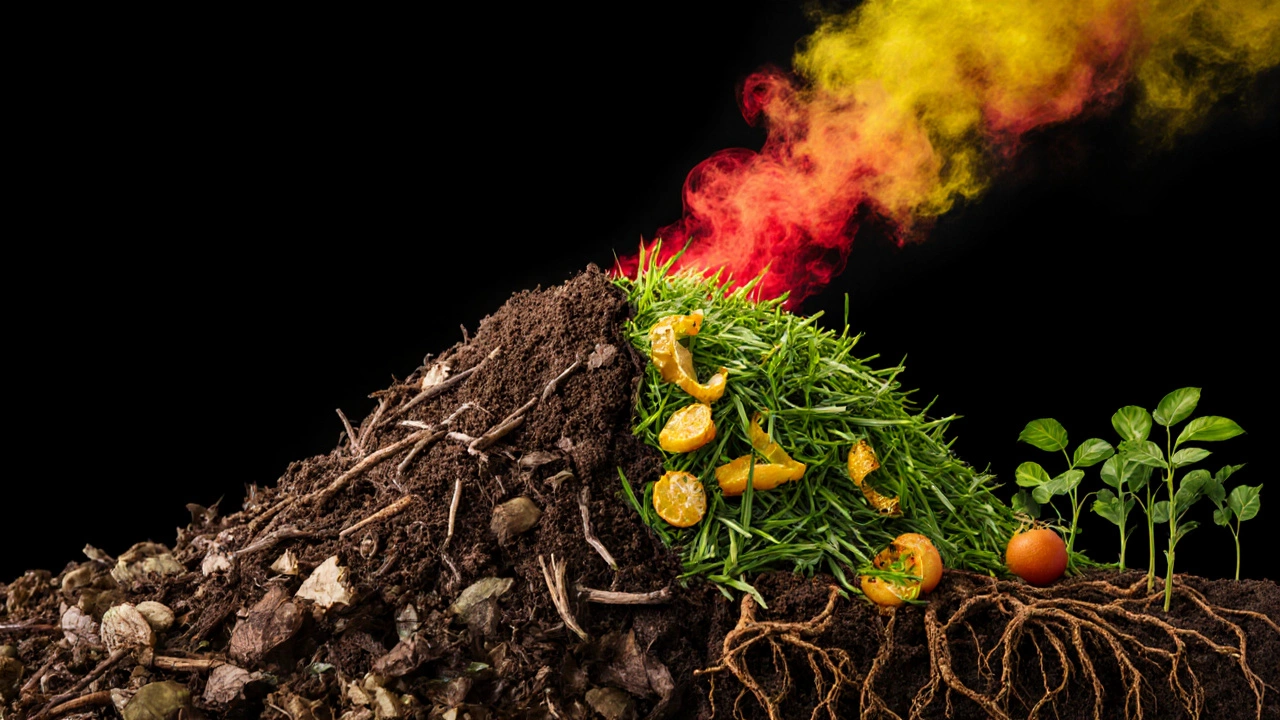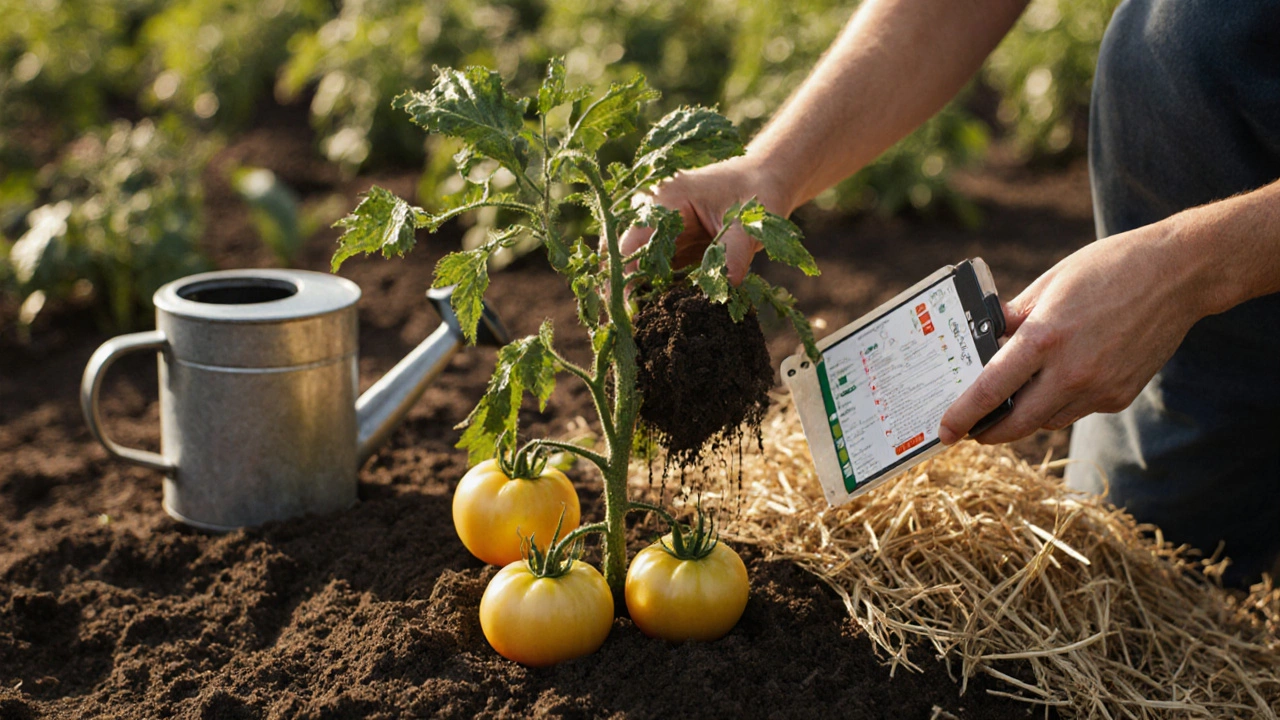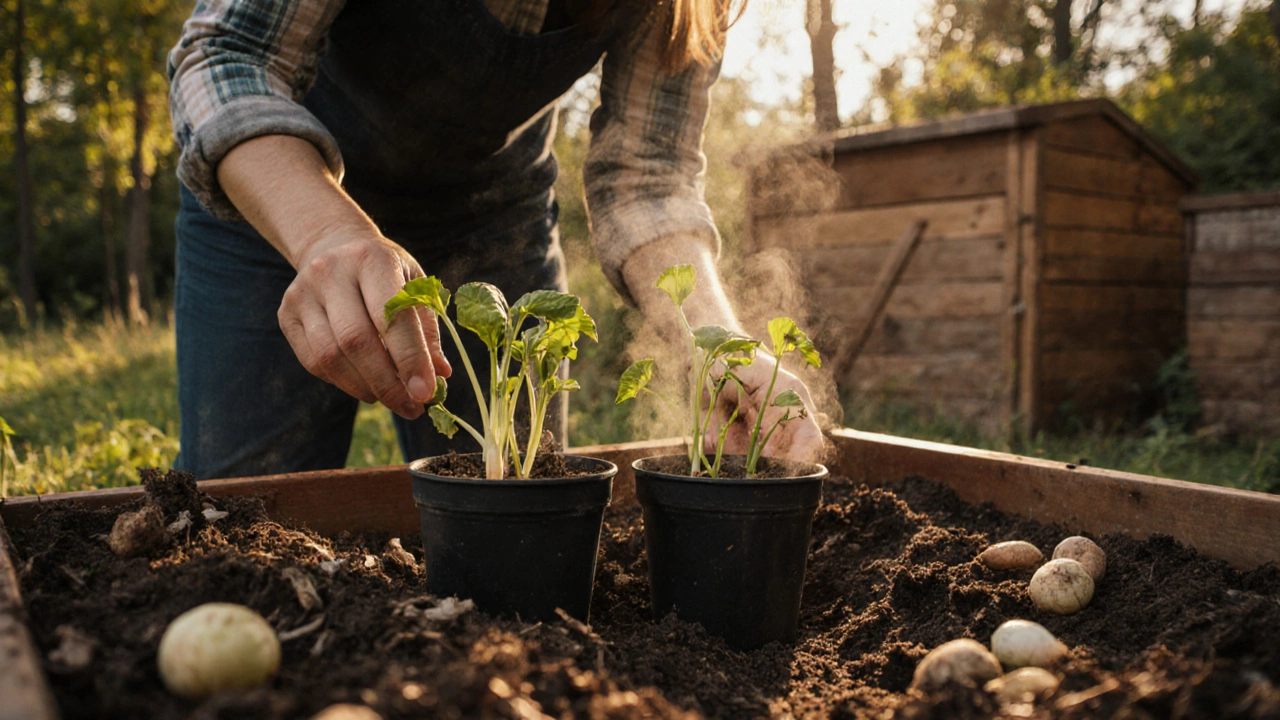Compost Readiness Checker
Check Your Compost
Result:
WARNING:
If your plants are turning yellow, wilting, or dying right after you added compost to the soil, you’re not alone. Many gardeners think compost is always good-until it isn’t. The truth is, not all compost is created equal. Poorly made or misused compost can burn roots, lock up nutrients, or even introduce toxins. If your plants are suffering, the problem likely isn’t your plants-it’s the compost.
Compost That’s Too Fresh
One of the most common reasons compost kills plants is that it’s not finished. Fresh compost, still hot and steaming, is full of active microbes breaking down materials. These microbes are busy consuming oxygen and releasing ammonia, organic acids, and heat. When you bury fresh compost near plant roots, it’s like dumping a chemical reactor right next to them.Plants don’t need active decomposition-they need stable, mature nutrients. Finished compost should look like dark, crumbly soil, smell like wet forest earth, and feel cool to the touch. If it’s still warm, smells sour or like ammonia, or you can still see chunks of food scraps or leaves, it’s not ready.
Most home compost piles take 3 to 6 months to mature. In colder climates or if you’re not turning it often, it can take up to a year. Don’t rush it. Spread fresh compost on top of the soil as a mulch, not mix it into planting holes. Let it finish breaking down naturally before planting into it.
Too Much Nitrogen, Not Enough Carbon
Compost needs balance. Too many green materials-like grass clippings, coffee grounds, or kitchen scraps-and not enough browns-like dried leaves, straw, or shredded paper-and you get a nitrogen-heavy mess. This imbalance causes two problems: ammonia burn and nutrient lockup.Excess nitrogen breaks down into ammonia gas, which fries delicate root hairs. You’ll see plants suddenly turn brown at the edges, as if scorched. Even worse, microbes go into overdrive, using up all the available oxygen in the soil. Roots suffocate. The result? Plants that look like they’re dying of thirst, even when the soil is wet.
Fix it by adding carbon-rich materials. Mix in shredded cardboard, dry leaves, or wood chips to your compost pile. Aim for a 25:1 to 30:1 carbon-to-nitrogen ratio. If you’re adding compost to garden beds, mix no more than 1 inch of finished compost into the top 6 inches of soil. More than that, and you risk overwhelming the soil’s natural balance.
Compost Made with Harmful Materials
Not everything that’s organic belongs in compost. If you’ve added meat, dairy, oily foods, pet waste, or treated wood to your pile, you’re inviting trouble. These materials don’t break down cleanly. They attract pests, carry pathogens, or leach toxins into the soil.For example, compost made with pet waste can contain roundworm eggs that survive even hot composting. These eggs hatch in your garden and infect plant roots-or worse, can be passed to humans. Treated wood or pressure-treated lumber in compost releases copper, chromium, or arsenic. These metals build up in the soil over time and poison plants.
Stick to safe inputs: fruit and veggie scraps, eggshells, coffee grounds, tea bags (remove staples), yard waste, and untreated paper. If you’re unsure whether something belongs, leave it out. It’s better to have less compost than toxic compost.

Compost Too Salty or Acidic
Some compost piles become too salty or too acidic. This often happens when you compost large amounts of coffee grounds, citrus peels, or manure without enough balancing browns. High salt levels prevent plants from taking up water-even if the soil is moist. Roots can’t absorb moisture, and plants wilt despite being surrounded by water.Acidic compost (pH below 5.5) makes essential nutrients like phosphorus and calcium unavailable to plants. You’ll see stunted growth, purple leaves, or yellowing between veins. Tomatoes, peppers, and beans are especially sensitive to low pH.
Test your compost before using it. Grab a home soil test kit-available at garden centers-for under £10. Mix a spoonful of compost with distilled water, let it sit for 20 minutes, then check the pH. Ideal compost pH is between 6.0 and 7.5. If it’s too acidic, add crushed eggshells or garden lime to your next batch. If it’s salty, leach it out by watering heavily and letting it drain before using it in the garden.
Applying Compost at the Wrong Time
Even good compost can hurt plants if applied at the wrong time. Adding fresh compost in early spring, right before planting, is a classic mistake. The compost is still breaking down and pulling nitrogen out of the soil to feed its microbes. This creates a temporary nitrogen deficiency, known as nitrogen drawdown.Plants respond by turning yellow and growing slowly. It looks like a nutrient problem-but it’s not. The soil has plenty of nutrients; they’re just tied up in the composting microbes.
Solution: Apply compost in the fall, after harvest. Let it sit all winter. Microbes will finish their work, nutrients will stabilize, and by spring, your soil will be ready. If you must add compost in spring, use only fully finished compost and mix it in well. Wait two weeks before planting to let things settle.
Compost That’s Too Dense
Some gardeners pile compost right on top of seedlings or mix it thickly into planting holes. This creates a dense, compact layer that blocks air and water movement. Roots can’t breathe. Water pools on top or runs off instead of soaking in.Think of compost like mulch, not a planting medium. Use it to improve soil, not replace it. Spread a 1/2-inch to 1-inch layer over existing soil and gently work it in. For container plants, mix no more than 20% compost with 80% potting soil. Too much compost in pots leads to waterlogging and root rot.
Also, avoid using compost as a seed-starting medium. It’s too rich and holds too much moisture. Use a sterile seed mix instead. Once seedlings are established, you can transplant them into soil amended with compost.

How to Test Your Compost Before Using It
Before you risk your plants, test your compost. Here’s a simple method:- Fill a small pot with your compost.
- Plant a few fast-growing seeds like radish or lettuce.
- Water normally and keep in a sunny spot.
- Wait 7 to 10 days.
If the seeds germinate and the seedlings grow green and strong, your compost is safe. If they die, stay yellow, or look burnt, your compost isn’t ready-or it’s contaminated. Don’t use it in your garden yet.
What to Do If Your Plants Are Already Damaged
If you’ve already added bad compost and your plants are struggling, act fast:- Stop adding more compost.
- Water deeply to flush out excess salts or acids. Let water drain freely.
- Remove the top 2 inches of compost from around the plants.
- Add a layer of clean mulch (straw or wood chips) to protect roots and retain moisture.
- Wait. Many plants recover if the damage isn’t severe. New growth in a few weeks is a good sign.
For severely damaged plants, consider transplanting them into fresh soil. Don’t try to save them with fertilizer-this makes things worse. Give them time and clean conditions.
How to Make Compost That Won’t Kill Your Plants
To avoid this problem next time, follow these simple rules:- Use a 3-bin system: one for fresh scraps, one for turning, one for curing.
- Turn the pile every 1-2 weeks to add oxygen.
- Maintain a 3:1 ratio of browns to greens.
- Keep it moist, like a wrung-out sponge.
- Let it sit for at least 3 months before using.
- Test it with a seed germination test before applying to your garden.
Good compost takes time. It’s not a shortcut-it’s a partnership with nature. When done right, it transforms soil, boosts plant health, and cuts down on waste. But rushed or careless composting? It’s the opposite of gardening. It’s sabotage.
Can I use compost straight from the bin?
No. Compost straight from the bin is usually too fresh. It’s still breaking down and can burn roots or lock up nutrients. Let it cure for at least 3 months. Finished compost should be dark, crumbly, and smell like soil-not sour or ammonia-like.
Why do my plants turn yellow after adding compost?
Yellowing usually means nitrogen is being pulled from the soil by microbes in immature compost. The microbes are eating nitrogen to break down carbon-rich materials. This creates a temporary deficiency. Wait 2-4 weeks after adding compost before planting, or use only fully finished compost.
Is it safe to compost citrus peels and coffee grounds?
Yes, but in moderation. Too much citrus or coffee grounds can make compost too acidic. Mix them with plenty of browns like dried leaves or shredded paper. Aim for no more than 10-15% of your total compost volume from these materials.
Can compost kill plants because of pests?
Yes, if it contains pet waste, meat, or diseased plants. These can carry pathogens, weed seeds, or parasite eggs that survive in the soil. Only compost plant-based kitchen scraps and yard waste. Never add dog or cat feces, cooked food, or weeds with seeds.
How do I know if my compost is ready?
Finished compost looks like dark, crumbly soil. You shouldn’t be able to recognize the original materials-no chunks of banana peels or leaves. It smells earthy, not sour or smelly. It should feel cool, not warm. Do a seed test: if lettuce or radish seeds grow well in it, it’s ready.
